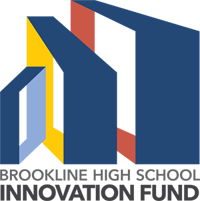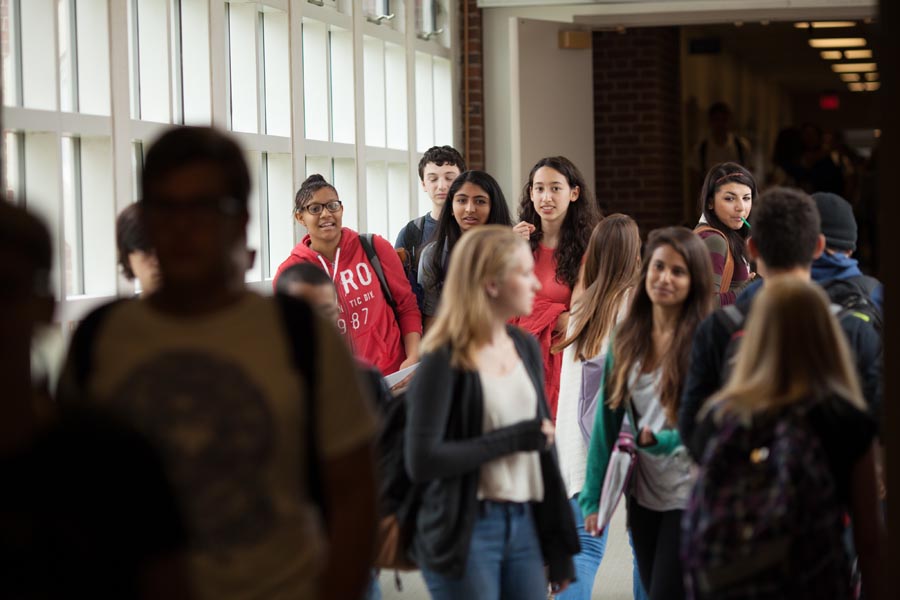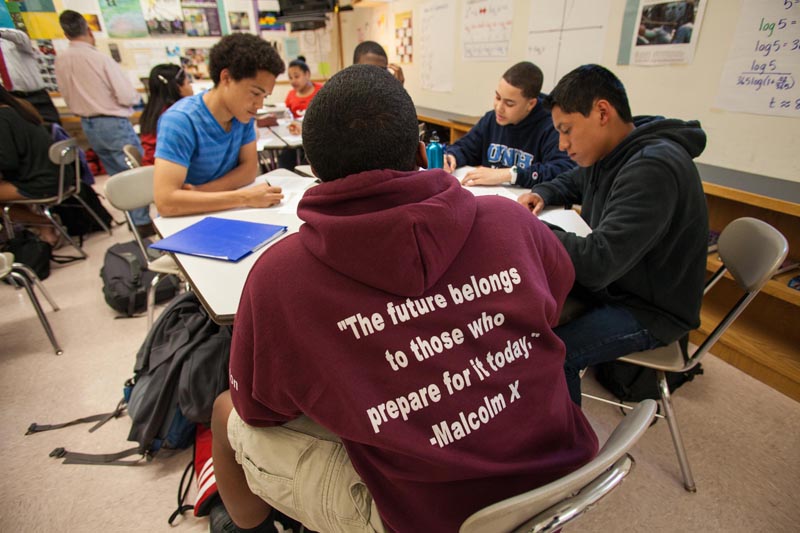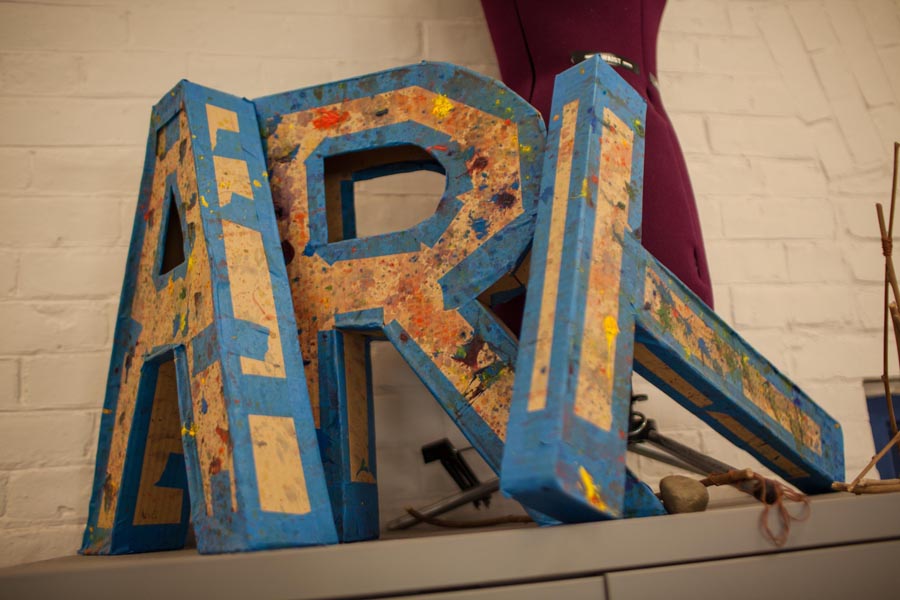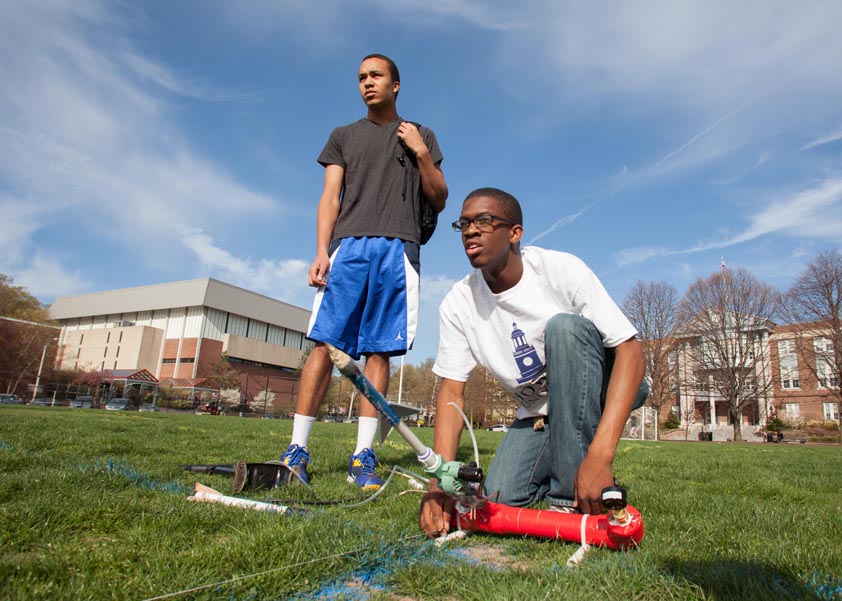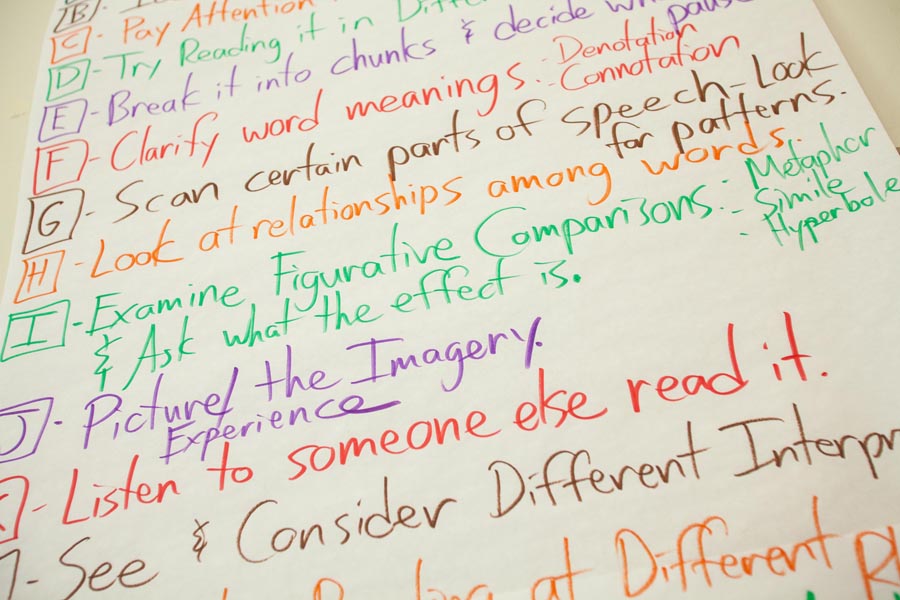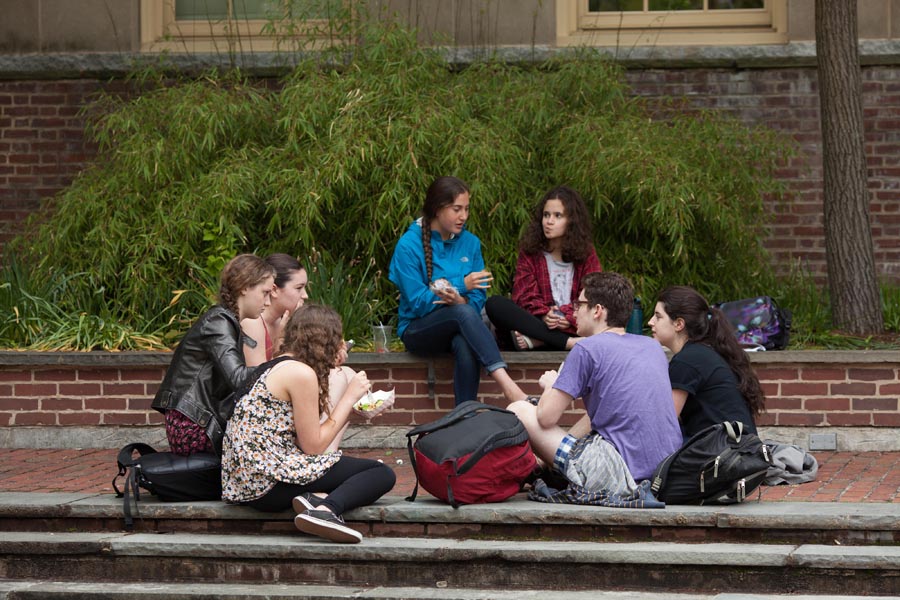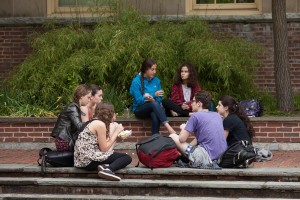African-American and Latino Scholarship Program
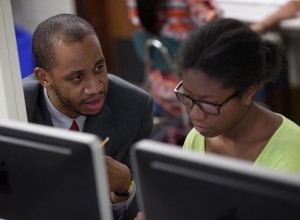
Supporting students of color to achieve academic success and fostering a culture of serious, invigorating scholarship.
After initial funding from the BHS Innovation Fund, the African-American and Latino Scholarship Program is now fully integrated into the Brookline High School curriculum.
This Program was designed to address the issue of minority student isolation impeding academic performance. AALSP has developed a corps of academically excellent African-American and Latino students who have become role models in the BHS community and has greatly raised the bar for academic and personal achievement among African-American and Latino students. Students in all four grades, each with a GPA of 2.7 or higher, participate in the program. These students have become part of a culture of achievement.
Although AALSP does not deserve sole credit, the performance improvement for this student population within BHS has been impressive:
99% of Scholars take at least one honor or AP class. The majority takes two or more.
The graduating Scholar class of 2012 earned more than 2 million dollars in scholarships for college. The graduating class of 2013 is on pace to earn even more.
One-third of all the Scholars in the graduating class of 2013 earned admission into the National Honor Society. This is a 233% increase over just 4 years ago.
Since its inception in January 2003, the AALSP has evolved from a club meeting once a week to mentoring a dozen juniors, to a comprehensive four-year program of full-credit courses for seventy-five Brookline High 9th through 12th graders. The courses meet four times a week: twice a week, students attend African-American & Latino history seminars, taught by the AALSP’s director, Stephanie Hunt; the other two periods per week are led by a math teacher and an English teacher and these sessions focus on vital academic issues — on enhancing the skills necessary to succeed in core classes, to perform well on high-stakes tests such as the SAT and the MCAS, and to prepare for applying to college.
The program’s influence is already reaching beyond the Brookline district to attract national interest; it is quickly becoming a model of how to bolster the achievement of Black and Latino students. The AALSP’s 2.7 GPA requirement makes it unique among the nation’s academic programs for students of color. Districts throughout the country have established academic support programs for students of color, but none meets Brookline’s standard of rigor and commitment. The underlying principle of the AALSP is quite simple: in order to truly become scholars, members of the program must have access to enriching activities designed to foster both knowledge of self and to bolster their hardcore academic skills. The AALSP has turned the minority achievement paradigm on its head; instead of focusing on the achievement gap and on what students of color are not doing well, the program honors academic commitment and fosters a culture of high scholastic achievement among students of color at BHS.
In order to develop this academic culture, the AALSP has three central aims:
- To increase the number of students of color taking AP and honors classes,
- To increase the average SAT and MCAS scores among this same group, and
- To enable more students of color to earn admission into the National Honor Society.
Data collected from previous graduating classes of scholars indicate that the program is making firm inroads into all three goals. In the last two years, eleven of the AALSP’s participating students have been admitted into the National Honor Society. Moreover, the list of colleges that the two most recent graduating classes of the AASP are currently attending proves that the program works. These students are now attending: Bennett College, Boston University, Brown University, Dartmouth College, Denison University, Fordham University, Harvard University, Howard University, The University of Massachusetts, New York University, Skidmore College, Spelman College, The University of Southern California, Stanford University, Yale University, and Williams College.
AALSP members have been able to excel in large part due to the efforts and intervention of the African-American and Latino Scholars Program at BHS. The AALSP inspires all students — not just those accepted into the program. It is sending the message to all students that to be smart — to be a scholar — is cool.
From AALSP Students, Class of 2013:
“I enjoy being part of AALSP because of the high expectations that push me to do my best. I want to be proud of the other members of AALSP and I also want them to be proud of me.”
“AALSP is a catalyst to me. It facilitates basically everything I do in school.”
“Moving up into AALSP was a goal for me last year. I’m glad I accomplished that goal.”
“Having the Scholars Program allows me to feel more confident about my academic work. I am able to meet with my peers and focus on school work. I can also seek help from the teacher any time I need it. The program gives me a real sense of academic community.”
“Being in Scholars means that being black is something great.”
The underlying principle of the AALSP is quite simple: in order to truly become scholars, members of the program must have access to enriching activities designed to foster both knowledge of self and to bolster their hardcore academic skills.
African-American Latino Scholars Program Expected Outcomes and Objectives
Grade 9 Students will:
- Begin reading and analyzing the scholarly works of author of color including Langston Hughes, Booker T. Washington, Juan Williams, and Martin Luther King Jr.
- Develop a functional definition of scholarship
- Analyze how their identity as a scholar overlaps with their identity as a person of color
- Construct a mission statement which will speak to their goals both during and after high school
- Discuss the AALSP summer reading
- Identify supports available to pupils in need of academic assistance
- Practice the skills needed to marshal additional academic supports
- Discuss W.E.B Dubois’ ideas about the “talented tenth” and analyze the ramifications of this concept.
- Participate in seminars related to the history of people of color in the media
- Learn about the civilizations of ancient Africa, most specifically Egypt
- Learn about the geography and history of nations in Central and South America
- Study and debate the history and causes of immigration to the United States
- Examine the under-development of Africa and the Caribbean
- Examine United States intervention in various nations in Latin America
- Be introduced to “Garveyism” as a response to colonization in Africa
- Study the American Civil Rights Movement and the critical figures which helped make it possible
- Investigate the Farm Workers movement as led by Caesar Chavez and Dolores Huerta
- Work with Mr. Fischer to edify public speaking and critical reading skills
Grade 10 Students will:
- Continue to examine the scholarly works of authors of color including, Dr. Benjamin Elijah Mays, Carter G. Woodson, Dr. W.E.B. Dubois, Dr. Beverly Tatum, Dr. Theresa Perry, and Lalo Alcarez
- Prepare for the MCAS using events in African-American and Latino history as jumping off points for writing
- Participate in local college visits
- Examine health disparities affecting Black and Latino people
- Develop an awareness of Black and Latino leaders in the business and art communities
- Familiarize themselves with prominent alumni of historically Black colleges and universities (HBCU’s)
- Examine the idea of “code-switching” and its relationship with academic success
- Study the history of the voting rights struggle
- Examine the historical relationship between African-Americans and Native Americans
- Learn about African-American and Latino luminaries in the fields of math and science
- Investigate the concept of wealth creation by way of their simulated investment in the Stock Market
- Receive academic content support by way of bi-weekly class sessions with Ms. Kennedy-Justice
Grade 11 Students will:
- Continue to analyze the writings of authors of color including Dr. Juwanza Kunjufu, Nikki Giovanni, and Paul Dunbar
- Develop an understanding of the “flat world” particularly as it relates to global competition
- Examine the history of medical racism in this country, particularly as it affected poor women of color
- Learn about, compare, and contrast various methods of African resistance to enslavement
- Receive academic content support by way of bi-weekly class sessions with Ms. Kennedy-Justice
- Begin to prepare, in earnest, for the SAT by way of intensive writing and math support
- Participate in visits to local colleges
- Examine and develop a keen understanding of the college financial aid process
- Create and refine college lists
- Continue to explore Historically Black Colleges and Universities as viable college options
- Identify factors which are most important in their individual college selection process
- Fortify their awareness of various college application options, including early action and early decision
- Complete their college application essays
- Participate in “student professional development” workshops designed to give them the skills required to dress for success and interview effectively
Grade 12 Students will:
- Finalize their college lists
- Complete college applications
- Participate in student financial aid workshops
- Complete requisite college financial aid forms such as the FAFSA, CSS Profile, and Brookline High School Scholarship application
- Take part in “life on campus workshops” designed to facilitate the transition into college and bolster their financial literacy
- Assist in the recruitment and selection of new Scholars
- Support 8th grade students and their families as they begin the process of transitioning into Brookline High School
AALSP Parents will:
- Have the achievement of their children celebrated during annual AALSP opening and closing ceremonies
- Interface with other AALSP parents to identify supports and opportunities available to students
- Have the chance to participate in workshops designed to support them and their children as they begin the transitions to high school and college
- Receive support from the AALSP Teacher/Leader in identifying supplemental educational opportunities for their children

